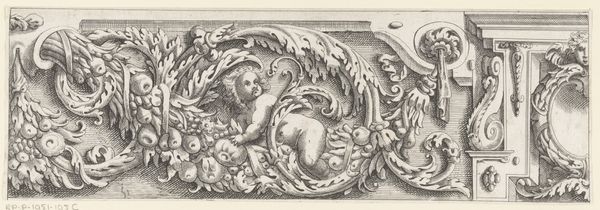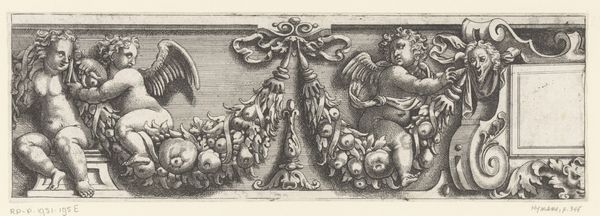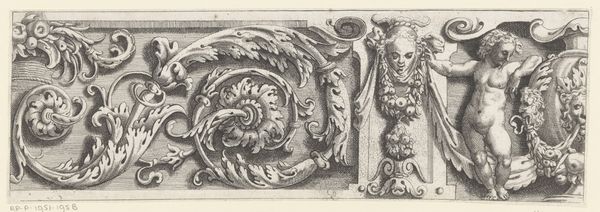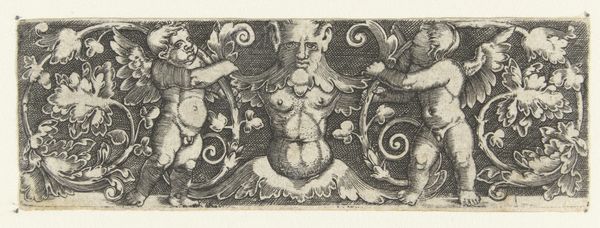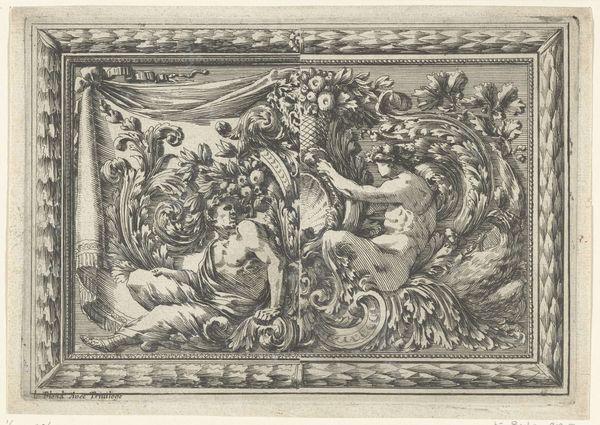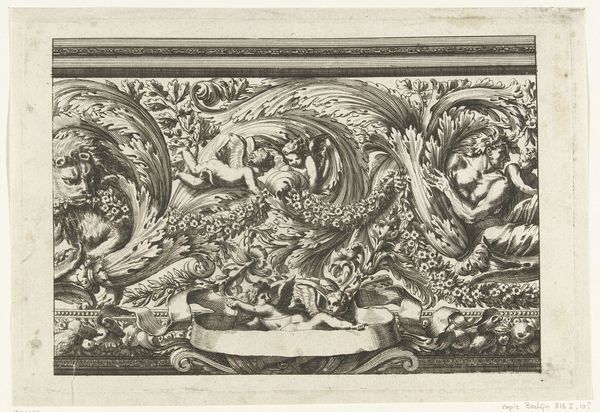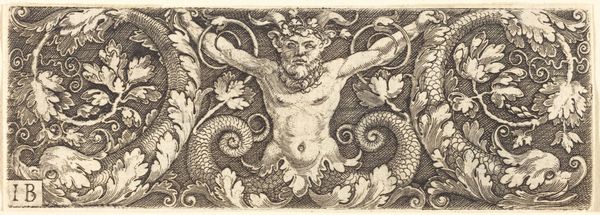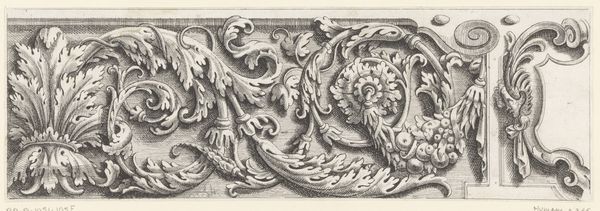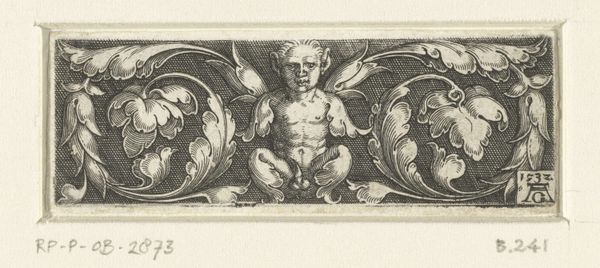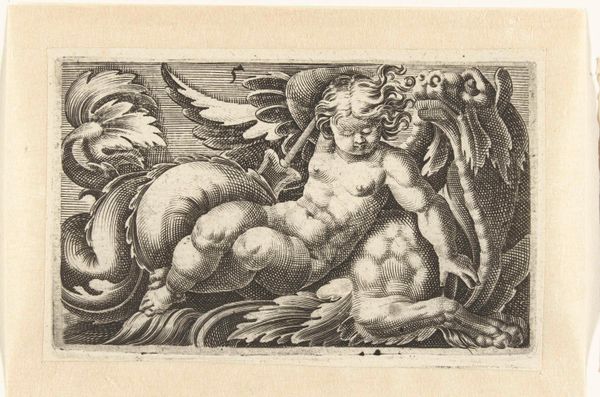
print, metal, engraving
#
baroque
#
pen drawing
# print
#
metal
#
old engraving style
#
figuration
#
engraving
Dimensions: height 92 mm, width 279 mm
Copyright: Rijks Museum: Open Domain
This horizontal band, titled "Putto op guirlande en ranken met acanthusbladeren", was created by an anonymous artist using etching and depicts a cherubic figure amidst garlands of acanthus leaves. The putto, a symbol deeply rooted in classical antiquity, experienced a resurgence during the Renaissance, becoming a popular decorative motif. Often associated with love, innocence, and divine presence, the putto existed within a complex social framework. Consider the historical context in which images of childhood were often idealized or imbued with symbolic meaning. This was a time when childhood mortality rates were high, and representations of children could serve as a way to negotiate societal anxieties around fragility and loss. How might the contemporary viewer engage with this image? Does the putto evoke a sense of nostalgia, a longing for a prelapsarian innocence, or perhaps a more critical reflection on the historical construction of childhood itself? In the end, this is not just a decorative element, it is also a mirror reflecting our evolving perceptions of youth, beauty, and the enduring power of symbols.
Comments
No comments
Be the first to comment and join the conversation on the ultimate creative platform.

